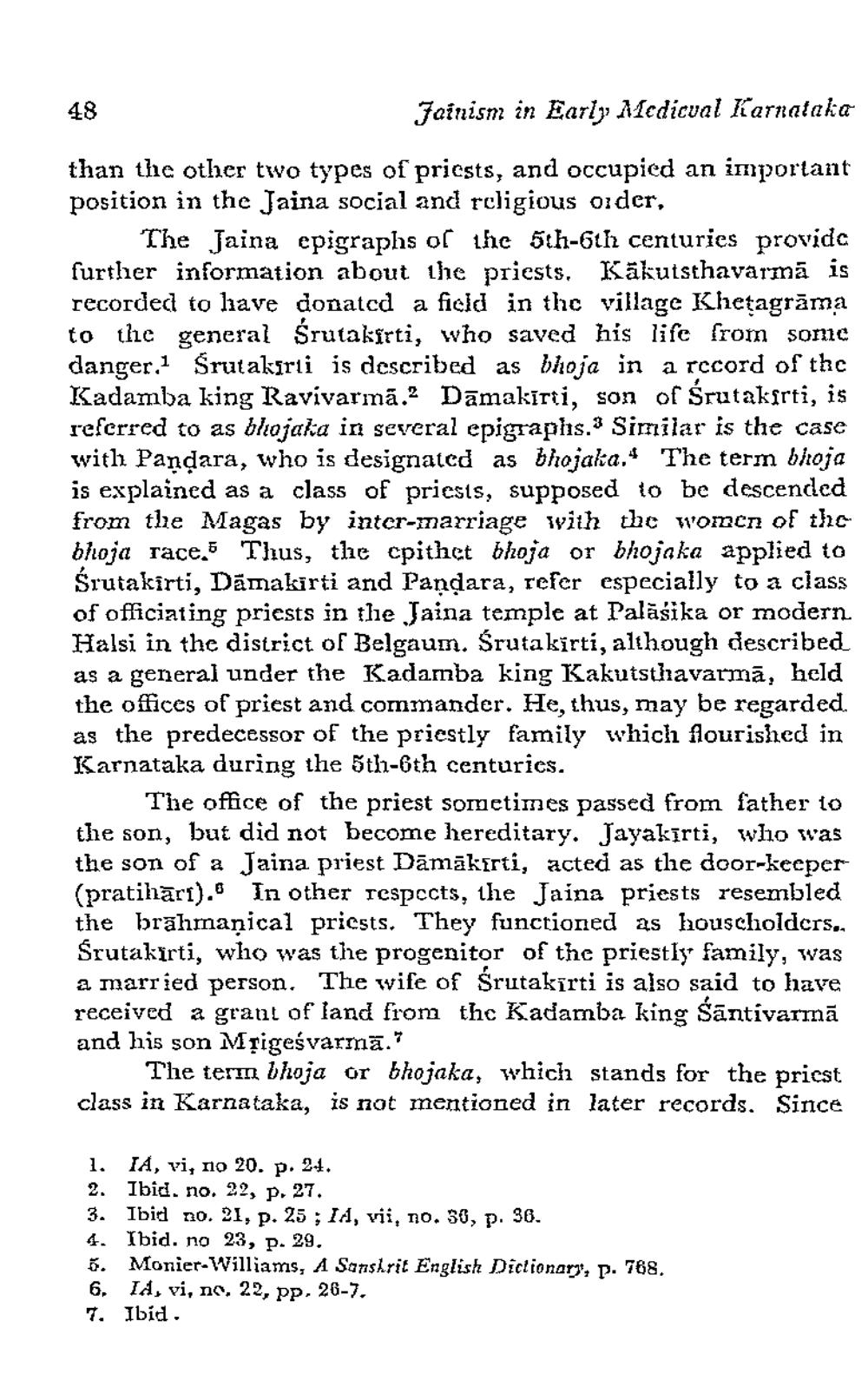________________
48
Jainism in Early Medicval Karnataka
than the other two types of pricsts, and occupied an important position in the Jaina social and religious order,
The Jaina epigraphs of the 5th-6th centuries provide further information about the priests. Kākutsthavarmā is recorded to have donated a field in the village Khetagrāma to the general Srutakirti, who saved his life from some danger,1 Srutaksrti is described as bhoja in a record of the Kadamba king Ravivarmā. Dāmakīrti, son of Śrutaksrti, is referred to as blajaka in several epigraphs. Similar is the case with Pandara, who is designated as bhojaka.The term bhoja is explained as a class of priests, supposed to be descended from the Magas by inter-marriage with the women of the bhoja race. Thus, the cpithet bhoja or bhojaka applied to Śrutakirti, Dāmakirti and Pandara, refer especially to a class of officiating priests in the Jaina temple at Palāśika or modern Halsi in the district of Belgaun. Srutakirti, although described as a general under the Kadamba king Kakutsthavarmā, held the offices of priest and commander. He, thus, may be regarded. as the predecessor of the priestly family which flourished in Karnataka during the 5th-6th centuries.
The office of the priest sometimes passed from father to the son, but did not become hereditary. Jayakīrti, who was the son of a Jaina priest Dāmākīrti, acted as the door-keeper (pratināri). In other respects, the Jaina priests resembled the brāhmaṇical pricsts. They functioned as houscholders.. Śrutakirti, who was the progenitor of the priestly family, was a married person. The wife of Srutakīrti is also said to have received a grant of land from the Kadamba king śāntivarmā and his son Mrigeśvarmā."
The term bhoja or bhojaka, which stands for the priest class in Karnataka, is not mentioned in later records. Since
1. IA, vi, no 20. p. 24. 2. Ibid. no. 22, p. 27. 3. Ibid no. 21, p. 25; IA, vii, no. 30, p. 36. 4. Ibid. no 23, p. 29. 5. Monier-Williams, A Sanskrit English Dictionary, p. 768. 6. Id, vi, no. 22, pp. 26-7, 7. Ibid.




